Marcasite – Mineral Properties, Photos and Occurrence
Marcasite is very common mineral, but it is often ignored by mineral collectors. Despite its nice crystal forms, it lacks the luster of some other sulfides and its quite brittle. Its infamous instability in just slightly wet air does not help its popularity either.
Crystal Structure of Marcasite
Marcasite crystallizes in the orthorhombic crystal system. Crystals may display a variety of habits, ranging from tabular on {010}, to bipyramidal, reniform, mammilary, massive, or it may appear more delicate with stalactitic, cockscomb or spearhead shapes attributed to twinning on {101}. {101} is the most common plane of twinning; less is observed on {011}. Small radiating masses are known as dollars, and pseudomorphs after other minerals are well-known.
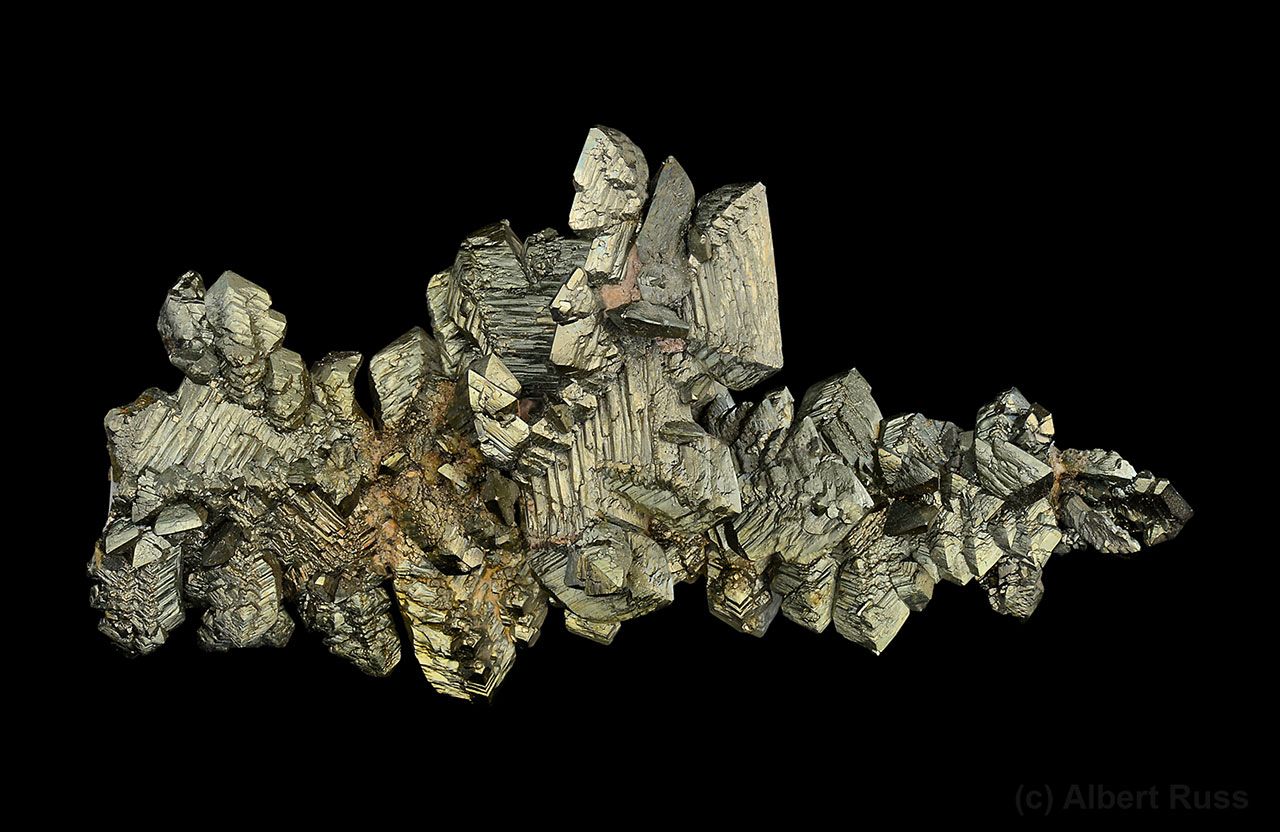
Galerie PATRIOT collection, Albert Russ photo.
Marcasite is iron disulfide FeS2 and often contains small amounts of Sb and As. It is chemically identical with cubic pyrite, but it is typical for low temperature environments up to surface conditions. Marcasite recrystallizes to pyrite above 425-450°C, but their relationship and exact stability fields are still not clear.
Marcasite is the only common mineral in the marcasite group, other members being rare selenides and tellurides.
Physical Properties of Marcasite
On fresh surfaces, marcasite color ranges from white to pale bronze-yellow; on exposure, the surface darkens and tarnishes, possibly displaying iridescence.
Marcasite luster is metallic; its hardness is 6.0-6.5; its streak is dark grey to black with greenish overtones; and its density is 4.875 to 4.877. Marcasite is strongly pleochroic, showing a creamy white on {100}, yellowish white on {010}, and white to rose-brown on {001}. Anisotropy is strong, ranging from yellow through multiple shades of green.
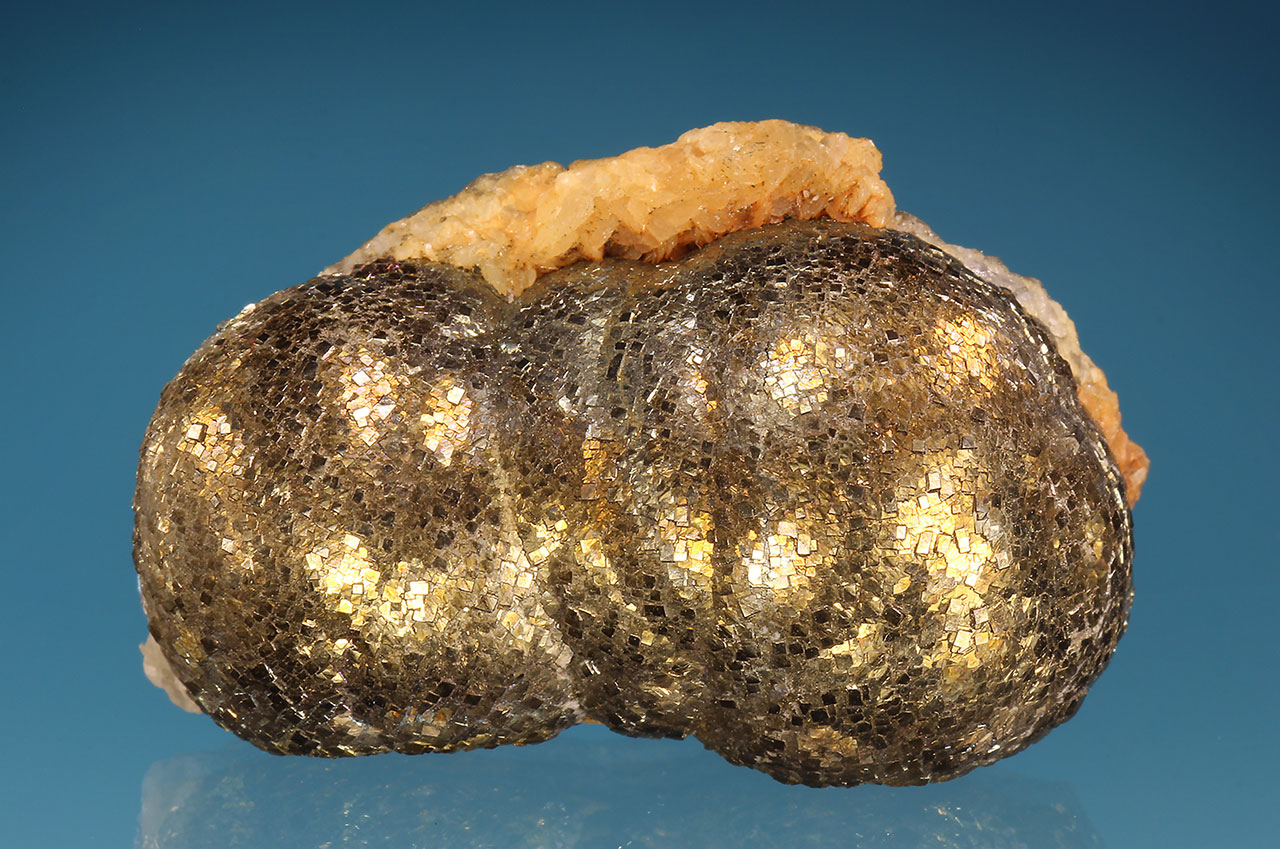
Size: 3.7 x 2.5 cm. Gerhard Brandstetter collection and photo.
Marcasite is lighter and significantly more brittle than pyrite; it cannot be scratched by a knife without crumbling, behavior blamed on an unstable crystal structure.
Varietal names
Marcasite has 3 recognized varieties:
- Blueite, a nickel-bearing variety recognized at Sudbury, Ontario
- Lonchidite, an arsenical variety identified in the Erzgebirge, Germany (also known by synonyms kausimkies, kyrosite, lonchandite and metalonchidite)
- Sperkise, a specimen type exhibiting a twin spearhead crystal twinned on {101} and attributed to unusual conditions of crystallization in the chalks of the English Channel
Naming and Discovery
The name marcasite has a long history of being used as a generic term to describe any yellow-brown iron sulfide.
Walter Pope, a celebrated English astronomer, is credited with observing in 1655 marcasites and stones containing flecks of gold in the mercury ores of the Idrija Mine in the Julian Alps of Slovenia. These flecks of gold turned out to be predominantly pyrite, with minor marcasite.
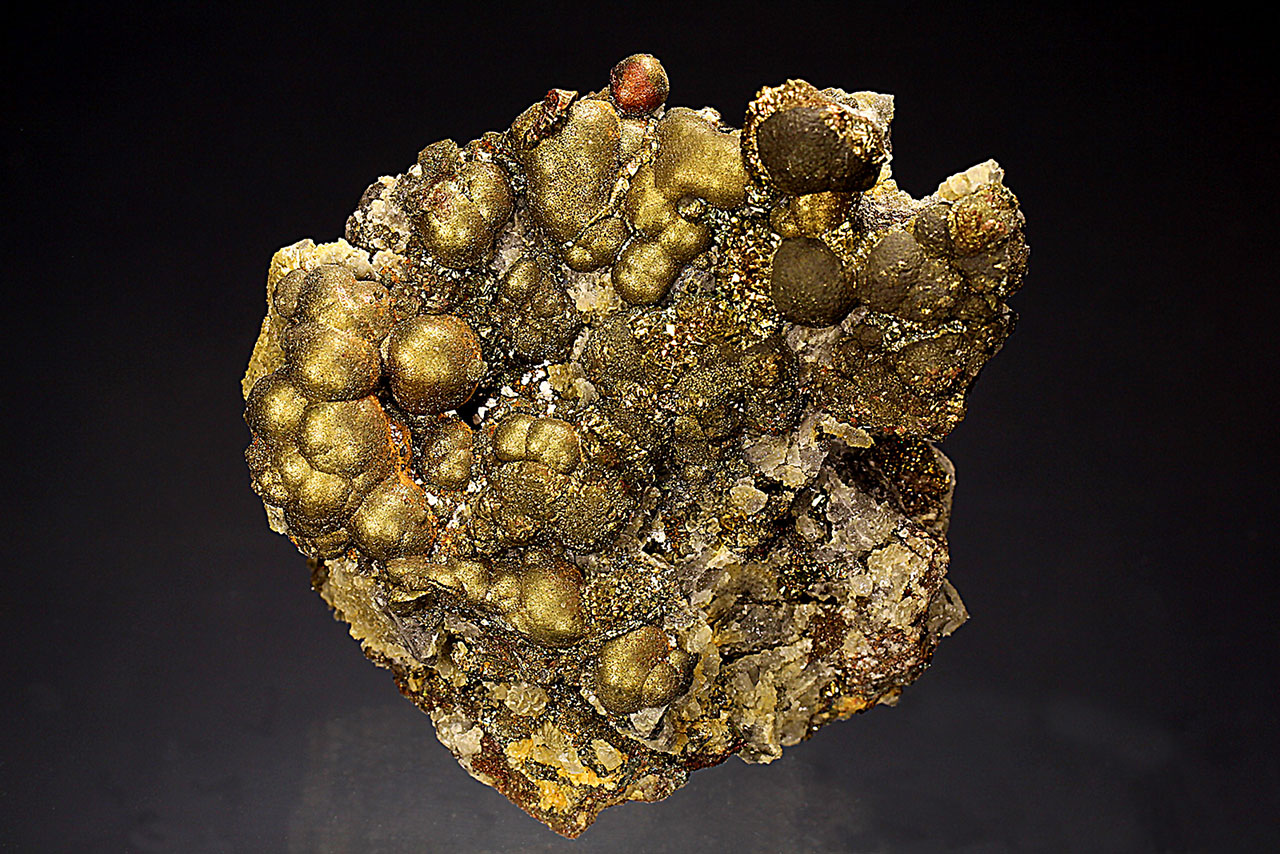
Size: 7 x 8 cm. Gerhard Brandstetter collection and photo.
Only in 1845 did Wilhelm Karl von Haidinger, a prolific mineralogist specializing in pseudomorphic mineral behavior, define marcasite in the crystallographic terms used today.
Similar Minerals
As already mentioned, the marcasite name was a generic term for all bronze or yellow-brown sulfides. Minerals like pyrite, pyrrhotite and in some cases chalcopyrite, arsenopyrite, löllingite or cobaltite might be very similar looking. Especially identification of massive sulfides might be a problem. Other sulfides (except pyrite) are softer then marcasite and some have different streak.
Fresh pyrite is more bronze/golden colored then marcasite and has black streak, while marcasite typically has more dull colors and gray-black streak. Unfortunately, marcasite might have irridescent coatings and/or pyrite might be slightly weathered and then they look exactly the same.
Origin of Marcasite
Marcasite is a common example of a primary or secondary mineral formed under low-temperature acidic conditions.
As a primary mineral, it readily forms nodules, concretions or sharply defined crystals or crystal clusters in a variety of sedimentary environments. It often occurs in coal deposits, both in coal layers and claystones around them. It is common in some chalk cliffs and can occur in some other sediments too.
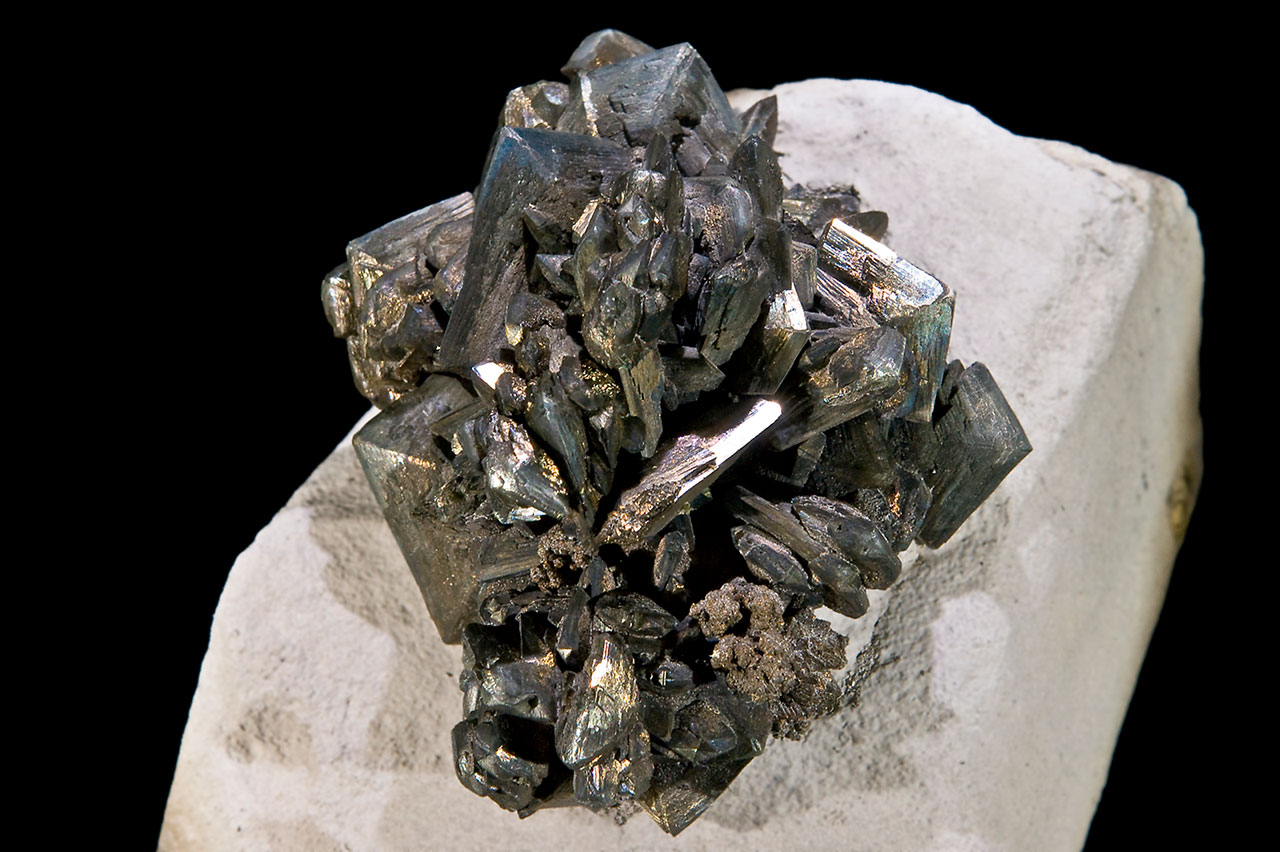
Size: 8 x 6 cm. Photo: Didier Descouens, license CC BY-SA 4.0.
Another primary marcasite occurrence is in the low temperature hydrothermal veins with sulfides. Marcasite is common at some deposits, but it is less widespread than more stable pyrite. It often occurs together with pyrite, sphalerite, galena, fluorite, and calcite.
As a secondary mineral it is most commonly an alteration product of other iron sulfides, it forms in reducing environments.
Stability of Marcasite Specimens
In addition to being brittle, marcasite decays rapidly under conditions of high humidity. Unfortunately, the humidity is not the only problem: many marcasite specimens already have tiny internal fissures filled with secondary sulfates (like melanterite) when they are collected.
The tiny amounts of sulfates and a little bit of humidity produce devastating effects on marcasite specimens. These decompose into a mixture of iron sulfates, oxides, hydroxides, and release sulfuric acid. And this can damage the other specimens stored together with affected marcasite.
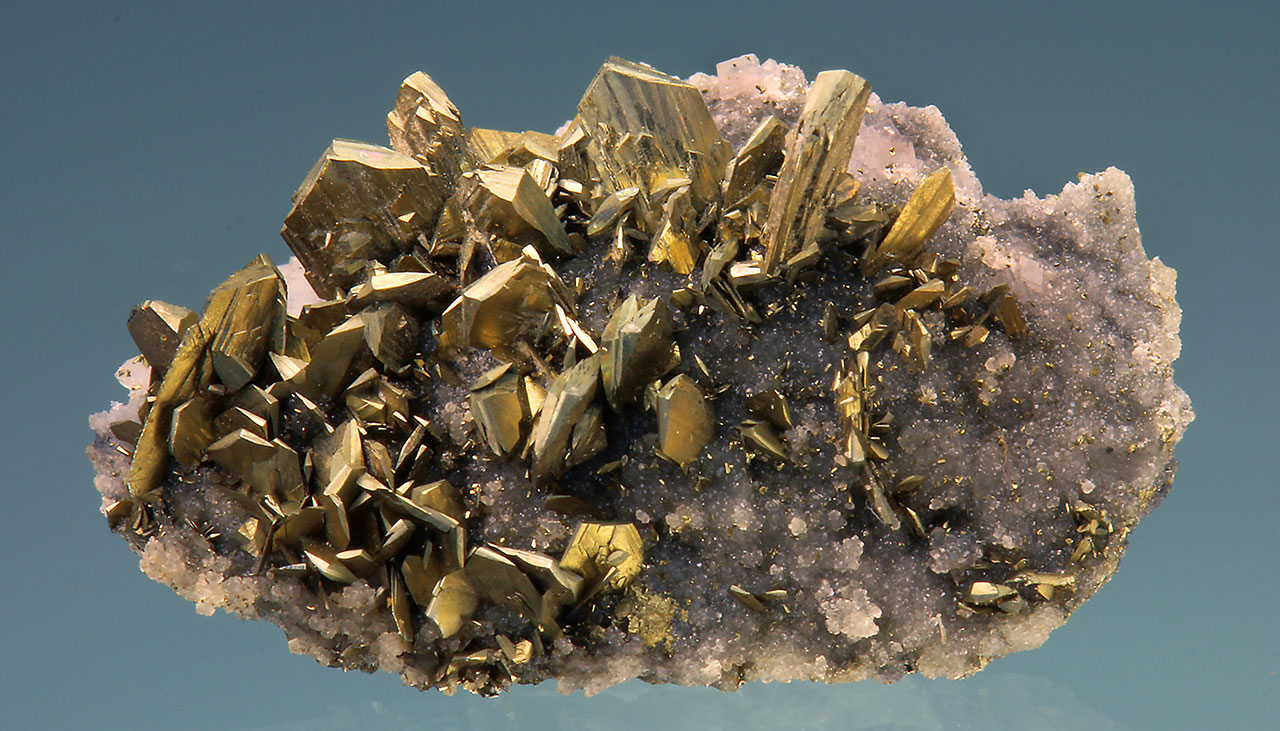
Size: 1.8 x 1 cm. Gerhard Branstetter collection and photo.
The decay starts with colorful and rusty stains on specimens and release of typical sulfuric smell. Such specimens are already internally damaged, and their proper conservation is often a problem. The decomposition continues with colors getting dull and dark, specimen becomes cracked and white powdery sulfates begin to appear on its surface. The last stage is total decomposition into powdery mass and spill of sulfuric acid.
Common treatments by covering marcasite by hair spray or other forms of sealing are inefficient, they just make the decomposition slower in best case. There are complex conservation methods, using chelates or ethanolamine-thioglycolate, which are beyond the scope of this article. However, the main problem is the price of the treatment, which is easily higher than the marcasite specimen itself.
Beware that most marcasite specimens on the market are not properly conserved!
Applications
The term marcasite marketed as marcasite jewelry or gemstone is actually a product made from pyrite. True marcasite is too brittle to be used as jewelry.
Historically, dating back to medieval times, the term marcasite was used to refer to true marcasite, pyrite, or pyrrhotite. The word marcasite has continued to survive as a term of art in the jewelry universe.
Marcasite lacks any modern-day industrial use. Formerly, it was a trivial source of sulfur to make sulfuric acid.
Occurrence
There are numerous localities worldwide with excellent specimens.
Perfect marcasite cluster occur in England and France, in the chalks lining the English Channel, specifically at Cap Blanc-Nez, Pas-de-Calais, France and at Dover and Folkestone, Kent, and at Tavistock, Devon, England.
Hydrothermal marcasites occur at Panasqueira in Portugal, at Clausthal, Freiberg, Annaberg and Misburg in Germany, and Herja, Baia Mare and Cavnic in Romania.
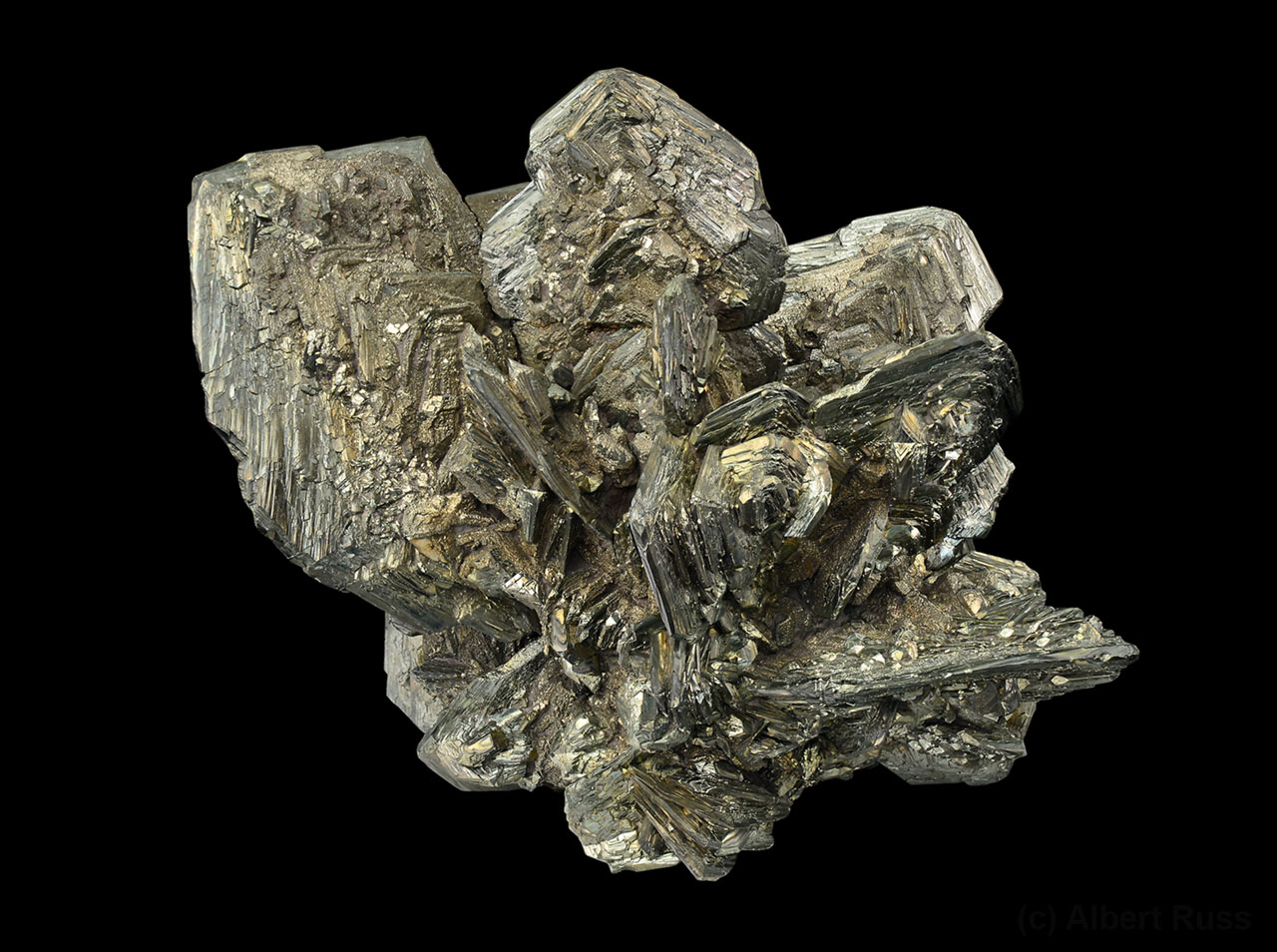
Size: 14.2 x 11 cm. Galerie PATRIOT collection, Albert Russ photo.
World class marcasite clusters occur along the soft coal deposits in NW part of Czech Republic, namely Vintířov, Komořany, Bílina, Sokolov and many others. Layered sulfide specimens, including marcasite, occur at Olkusz, Poland.
There are many deposits with marcasite in US: Rensselaer Quarry, Pleasant Ridge, Jasper County in Indiana; Baxter Springs, Treece and Galena, Cherokee County in Kansas; Joplin, Jasper County and at the Sweetwater Mine, Ellington, Reynolds County in Missouri; Picher and Cardin, Ottawa County in Oklahoma; Mineral Point, Iowa County; Shullsburg, Lafayette County and Racine, Racine County in Wisconsin.
Other notable marcasite localities include Lafarge Quarry, Dundas, Wentworth County, Ontario, Canada; mines in the Santa Eulalia district, Chihuahua, Mexico; Llallagua in Bolivia and the Oppu mine, Akita Prefecture, Japan.
References
- Fleet, M.E. (1975): Structural chemistry of marcasite and pyrite type phases. Zeitschrift für Kristallographie: 142: 332-346.
- Murowchick, J.B. (1986): Marcasite precipitation from hydrothermal solutions. Geochimica et Cosmochimica Acta: 50: 2615-2629.
- Schoonen, M.A.A., Barnes, H.L. (1991): Reaction forming pyrite and marcasite from solution I. Nucleation of FeS2 below 100° C. Geochimica et Cosmochimica Acta: 55: 1495-1504.
- Schoonen, M.A.A., Barnes, H.L. (1991): Reaction forming pyrite and marcasite from solution II. Via FeS precursors below 100° C. Geochimica et Cosmochimica Acta: 55: 1505-1514.
- Murowchick, J.B. (1992): Marcasite inversion and the petrographic determination of pyrite ancestry. Economic Geology: 87: 1141-1152.
- Dodony, I., Pósfai, M., Buseck, A.R. (1996): Structural relationship between pyrite and marcasite. American Mineralogist, 81(1-2), 119-125.
- Uhlig, I., Szargan, R., Nesbitt, H.W., and Laajalehto, K. (2001): Surface states and reactivity of pyrite and marcasite. Appl. Surf. Sci.: 179: 223-230.
- Schmøkel, M.S., Bjerg, L., Cenedese, S., Jørgensen, M.R.V., Chen, Y.-S., Overgaard, J., Iversen, B.B. (2014): Atomic properties and chemical bonding in the pyrite and marcasite polymorphs of FeS2: a combined experimental and theoretical electron density study. Chemical Science: 4: 1408-1421.





Comments